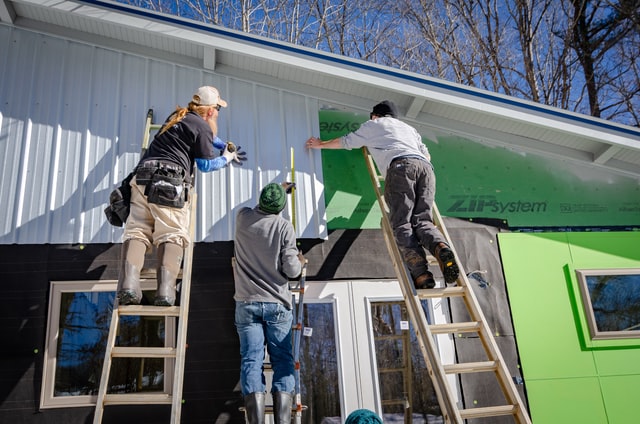Aging Noncombustible Construction
A building’s pre-engineered metal is an important factor in determining the longevity of a building. Noncombustible construction (ISO type 3) uses minimal combustible materials in the framework. In this type of construction, the exterior walls, floors, roofing, roofing deck, and building supports are made of non-combustible or slow-burning materials.
Noncombustible construction is typically used for one- or two-story commercial buildings, such as manufacturing facilities and warehouses. Structural steel is generally used for the framework, with walls made of metal sheathing, brick veneer or masonry. The roofing material can be anything on a steel deck and can be sloped or flat.
This article discusses the potential issues associated with noncombustible construction and actions facilities managers can take to limit or prevent damage.
Potential Issues
While noncombustible construction is easy to erect and economical to build, there are some disadvantages to this type of construction. The following areas are susceptible to damage:
- Frame and walls—Maintaining structural steel is integral to preserving building integrity and aesthetics. The steel frame can become damaged due to:
- Corrosion—Corrosion can be a risk to a building’s infrastructure, longevity and strength, and asset owners should understand how susceptible their buildings are to it. For example, a structure exposed to saltwater may face a higher corrosion risk. In addition, exposure to moisture can cause buildings to sustain damage.
- Combustible wall attachments—If plywood sheathing is attached to the inside of the exterior walls, the building may fall into a combustible construction class since plywood is combustible. Not only is that a potential issue for longevity, reclassification could also affect insurance rates.
- Metal walls—Noncombustible construction often features metal siding. Any scratched or damaged exterior wall could result in paint being removed, accelerating corrosion. A puncture in the metal walls can also result in water getting inside the building and damaging internal systems, such as plumbing or electrical.
- Roofing—The roofing system is critical for any building to keep the elements out. If the roof is allowed to deteriorate, moisture can spread, causing other systems to fall apart soon after. Every roof has a limited lifespan, and roofing systems for noncombustible buildings include pitched roofs with metal sheathing on top of the metal deck or flat roofs. Common noncombustible construction roofing materials include:
- Single-layer membrane—This material is simple to install with typically low maintenance and repair costs. The life expectancy of a single-layer membrane roof is about 25 to 40 years.
- Modified bitumen—Modified bitumen roofing is asphalt-based and designed for buildings with low-slope or flat roof structures. It can last for approximately 20 years.
- Built-up—A built-up roofing system is comprised of multiple layers of ply sheets and This type of roof can last from 15 to 30 years.
Prevention
Over time, any building will suffer wear and tear. However, facilities managers can take the following actions to minimize or prevent damage from occurring to noncombustible construction:
- Plan for known maintenance intervals. The longevity of certain structural elements can be estimated (such as a roof’s lifespan), and facilities managers should prepare and budget for routine maintenance.
- Conduct inspections. Inspections should occur at least twice a year to detect early warning signs of issues. Additional inspections should occur after renovations, new construction or extreme weather events. Roof inspections should occur twice a year, once when the weather is at its hottest and once when it’s at its coldest.
- Wash the building. If possible, buildings should be washed once a year to help identify damage more easily. Paint should also be routinely updated, as coatings play a significant role in protecting structural steel from corrosion.
- Clear snow off the roof. If snow buildup is allowed on the roof, it could bend components. Excessive moisture could also cause corrosion to the outer elements of the building.
- Talk to a contractor. If an issue is identified, consult with a qualified contractor to ensure the repair is done swiftly and properly. A subpar repair could lead to more damage.
Conclusion
As noncombustible construction ages, structural maintenance is essential to avoid costly repairs and keep the building safe for its inhabitants. For more commercial property guidance, contact us today.




